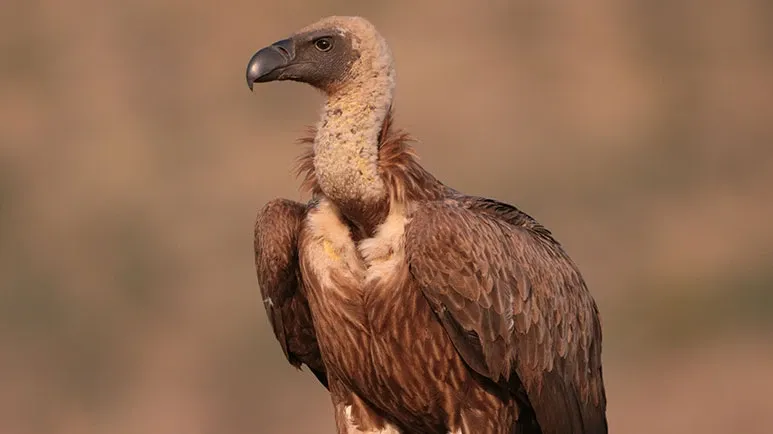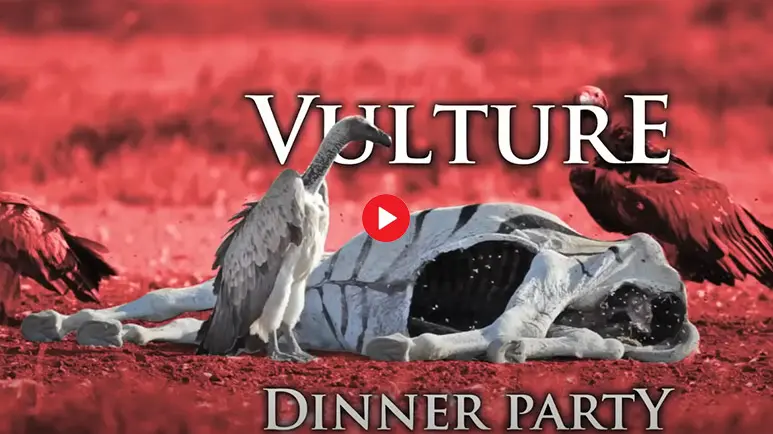Nature’s Ultimate Disease Fighters
Learn how vultures' unique digestive systems combat toxins and could revolutionize medical science.

STORY AT-A-GLANCE
- A study of the microbiome of two species of vultures revealed an astonishing 528 different kinds of bacteria on the birds' beaks and faces, but just 76 in their guts
- As bacteria moves through a vulture's digestive tract, only a few dozen species are able to survive the harsh, highly acidic environment; the surviving bacteria are strains known to be highly toxic to other animals, including humans
- Vultures provide enormous value to the ecosystem by disposing of millions of pounds of decaying flesh that could threaten other animals and the environment
- Three species of vultures in Asia are facing extinction due to the use of diclofenac in livestock, which remains in the tissues of dead animals; the drug is highly toxic to vultures that eat the carcasses

Studies of the microbiomes of various animals, including humans, are a growing field of research. (A microbiome is the collection of microbes found in and on an animal’s organs, including the mouth, gut, lungs, and skin.) As part of that effort, a team of scientists decided to have a look at the microbiome of one of my very favorite birds, the vulture.1
“If you're going to study any kind of bird's microbiome, we figured, vultures would be a great place to start,” study co-author Gary Graves, the curator of birds for the Smithsonian National Museum of Natural History, told the Washington Post. “It's a microbially rich environment, to say the least.”2
It would seem “microbially rich” is an understatement. The researchers discovered a whopping 528 different kinds of bacteria on the vultures’ beaks and faces, and 76 in the intestines of 50 turkey vultures and black vultures in the US.
These two species belong to a group called the New World vultures that also includes the California condor and Andean condor. Turkey vultures, also called buzzards, are common throughout North America. They have black feathers, a bald red head, and a wingspan of nearly 6 feet. Black vultures are slightly smaller with wingspans of around 5 feet. They also have black feathers, a bald dark grey head, and are found primarily in the southeastern states.
Vultures Eat Rotting Remains and Live to Dine Another Day
“They're sticking their heads into decaying carcasses, so it's not surprising that their faces have so many kinds of bacteria,” says Graves. “But when you get to the lower intestine, it's dominated by a small number of very common bacteria. There's a huge reduction from what they actually consumed.”3
What this means is that as the bacteria moves through a vulture’s digestive tract and extremely acidic stomach, only a few dozen species are able to survive. The bugs tough enough to take up residence in the bowels of vultures are the same ones that cause significant disease in humans, including clostridia and fusobacteria. Clostridia causes botulism, gangrene, and tetanus in humans, and fusobacteria plays a role in gum disease, the development of ulcers, and possibly colon cancer.
So not only do vultures have tremendously rugged digestive systems capable of obliterating most of the dangerous bacteria they ingest, their bodies also seem to easily tolerate certain microbes that are highly toxic to other animals.
However, even vultures don’t like their food too-too rotten. According to Graves, “They prefer recently deceased organisms rather than extremely putrid carcasses. For example, day-old road-killed deer are perfect.”4
Researchers don’t know whether the vulture gut simply endures the lethal bacteria, or actually encourages it to flourish. They theorize the bacteria provide some as-yet unidentified benefit to the birds.
The hope is that if we can understand how vultures tolerate such deadly bugs, we might gain insight into how to deal with them when they occur in humans.
Why We Should Be Thankful for Vultures
As I mentioned earlier, I’m a big vulture fan. They offer tremendous value to the ecosystem as scavengers, especially in hot climates. These big birds are able to eat up to 2 pounds of carrion in a single meal, which is over 10% of their body weight.
Their highly acidic stomachs allow them to safely clean up the carcasses of animals infected with deadly bacteria like botulism, classical swine fever and anthrax. And believe it or not, New World vultures urinate straight down their legs, and the urine kills bacteria they’ve picked up from walking through dead carcasses. These magnificent scavenging birds are vital to our natural world.
“People oftentimes don't recognize the enormous ecosystem services that vultures offer to humans,” says Graves. “It's a free, mobile sanitation department. They're discarding and consuming and getting rid of millions of pounds of decaying flesh that could threaten public health.”
And thanks to research, we now know that the vulture’s GI tract kills off most of the microbes it ingests instead of passing them back into the environment.
Vultures Are Facing Extinction in Asia
Less than three decades ago, there were millions of vultures on the Indian subcontinent. Today, three species of vultures native to India, Pakistan and Nepal — the oriental white-backed vulture, the slender-billed vulture, and the long-billed vulture — have decreased by over 95%.
The journey to extinction of these extraordinary birds has happened faster than even that of dodo birds. No other wild bird has seen its population decline so quickly.
The cause of the decline is a veterinary drug called diclofenac, which is a nonsteroidal anti-inflammatory drug (NSAID) used as an inexpensive treatment for inflammation, pain, fever, and lameness in livestock.
When the drug is administered to cattle shortly before death, it remains in the tissues of the carcasses, which is how vultures are exposed to it. Studies have shown that at just 10% of the recommended dose for animals, diclofenac is lethal to vultures.
Diclofenac has been banned for veterinary use in south Asia, but sadly, it is still being sold and used illegally.
Vulture Conservation Efforts
Fortunately, several organizations are working to improve the situation in south Asia. Captive breeding programs for several species of Indian vulture are underway. The goal is to eventually release captive-bred birds into the wild once the environment is free of diclofenac.
The more vultures the breeding centers can bring into captivity, the better the chance of survival for the species. Other measures must include banning the retail sale of diclofenac.
Another conservation effort is the establishment of vulture safe havens, also called safe zones and “vulture restaurants” in the wild. These are locations where there is very little risk of diclofenac poisoning in the areas surrounding the remaining wild vulture breeding colonies.
These sites will retain vultures within their natural habitat rather than in captivity, and the hope is also to use them as future release sites for captive bred birds.











